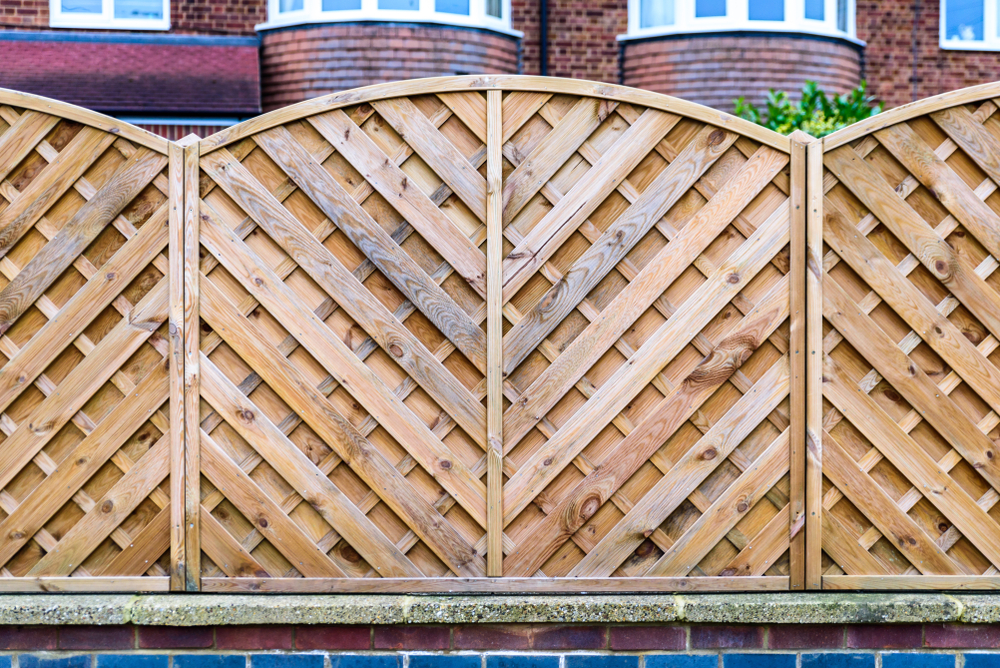Installing a new fence for your home can not only transform the look of your garden, but can provide enhanced safety and privacy as well as increase the value of your property. However, it’s not uncommon for homeowners to make mistakes, especially for those not familiar with basic fencing principles.
When installing a new fence for outdoor space, you need to get it right the first time. If not, you may find yourself reaching deeper into your wallet. In this article, we cover our top 5 fencing tips to help you avoid those costly mistakes.
1. Check if planning permission is needed
Before starting any work, you need to ensure you have the correct planning permissions to build the fence you desire. The UK has set rules for fencing on properties, and disobeying them could land you in a legal matter. For example, if you’re planning to install a fence more than 2 metres high, or 1 metre high where it adjoins a road or footpath, you’re legally required to apply for planning permission.
For more information on if you’ll need planning permission and how to go about applying, visit the GOV planning permission page.
2. Explore your property boundaries
If you’re replacing an old fence, you’ll more than likely have the correct boundaries for your property already scoped out. However, it’s always wise to double check you’re not building over your neighbour’s land before commencing any work.
Not only might this damage your relationship with the neighbours, but could also mean re-installing your fence as well as paying for any damage caused to their garden. An easily avoidable expense that happens more often than you think.
For additional information on property boundaries, visit the GOV property boundaries page. From here, you can view your property boundaries, make a boundary agreement with your neighbour, apply to record your exact boundary, or correct a boundary mistake on a title plan.
3. Plan your fence thoroughly
The easiest way to ensure you don’t overbuy on fencing materials is to plan and measure your fence properly from the beginning.
Once you’ve explored your property boundaries, you’ll know precisely where your property starts and ends. From here, you should assess your boundaries and look for any obstructions and utility lines. You may need to plan around/behind trees, while ensuring you don’t damage any underground utilities such as gas, electric and cable lines. This could be costly too!
To measure out your fence, mark the corners with a stake (the corners are where panels meet at a 90-degree angle) and then use string to measure out the entire length of your fence.
Measuring your fence properly from the beginning should avoid you overspending on materials, while opening your options for a made-to-measure fence.
4. Use galvanised nails to avoid rusting
When purchasing the materials needed to install your new fence, be sure to opt for galvanised nails. If not, you’ll find your nails rusting a lot quicker than you expect, leaving stains on your fence as well as shortening its lifespan.
5. Research fence post systems
Probably the most important factor when it comes to avoiding costly mistakes. Be sure to research your fencing options!
The fence post you decide on will have a massive impact on your costs. Both short-term and long-term. You need to take into consideration the cost of materials, installation, maintenance, the average lifespan, and durability. From here, you can decide on the most cost-effective option for your requirements.
There are three main types of fence posts, wood, concrete, and steel. But what are the advantages and disadvantages to each? And how much will they cost you to purchase, install and maintain?
This article was originally featured on Birkdale.
We know any garden work can feel overwhelming but don’t worry we literally take care of everything. We are a highly skilled fencing contractor and can advise on the best type of fence for your property so that it suits both your garden and your needs.

